Microsoft PowerPoint is the most widely used software for creating professional visual presentations. It is used for both business and academic purposes to organize and create a structural presentation to effectively put forth an idea to the audience by making use of visual images, texts, diagrams, transitional effects, animations, etc
PowerPoint presentation makes it an excellent way of delivering your ideas in the slideshow presentations while you are speaking to the audience present in the same room. But What if you want to deliver the presentation to an audience not physically close to you? Well, in such case, PowerPoint lets you add the audio narrations to your slideshow presentation that can be useful to play presentions if you aren’t physically close to your audience. You can add your thoughts and spoken words to PowerPoint presentations by adding the recorded commentary.
Adding audio narration and slide timings is an excellent way of presenting a self-running power point slide show. It is possible to record the audio commentary inside the PowerPoint slide show that can be synced to the slide timings. To capture the narration and slide timings, all you need to do is first set up the sound card and microphone that you want to include in the presentation file, then record your commentary and add it to your final PowerPoint presentation file. Users can either choose to add the audio narration to the entire PowerPoint presentation slides or can add the commentary for selected PowerPoint slide. Additionally, to make the self-running slide even more interactive, you can use annotations like a highlighter or laser pointer while recording your commentary on the presentation. In this article, we explain how to record narration with slide timings in a PowerPoint presentation.
Record Narration with Slide Timings in PowerPoint
Setup Microphone
In Microsoft PowerPoint, there is no direct provision to change the microphone settings. You cannot choose the recording device and change the volume level settings inside PowerPoint. So, before recording the narration in PowerPoint, make sure to set up the sound card volume levels and choose the default audio device that you want to include in the PowerPoint.
Go to Control Panel and click on Sound.
Navigate to the Recording tab and select the microphone where you want to record. Now click on Properties and go to Levels tab.
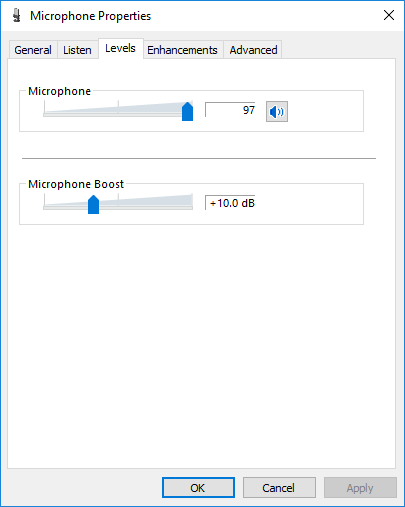
Adjust the microphone levels to the desired value to make sure your audio is not distorted.
Click Ok to apply the changes.
Read: How to use Digital pen for PowerPoint presentation
Record narration in PowerPoint
Open the slide show presentation file for which you want to add the narration. Make sure you are at the beginning of the slide to record narration and timings for the entire slideshow presentation.
In the PowerPoint ribbon, Go to Slide Show tab and click on Record Slide Show button.
Choose the option Record from Beginning to add narration for the entire slide presentation. Choose the Record from Current slide option to start recording on the current slide.
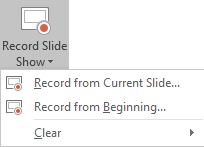
Once done a Record Slide Show box pops up.
Select the option Slide and animation timings to automatically record the time spent on each slide including annotations. It is highly recommended that you select this option to set up the slide and animation timings for your presentation.
Select the option Narration, ink and laser pointer to record commentary as well as record the playback of annotations like a laser pointer, highlighter, digital pen, etc. that you use to add illustrations on your presentation slides.
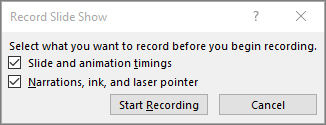
Click Start Recording button in order to start recording screen and narration through your microphone.
Once the recording starts, the presentation will be displayed in the full-screen view, and a recording toolbar appears at the top left corner. To go to the next slide, you can make use of right arrow key from the keyboard and re-record the current slide use the left arrow.
Use Annotations to add markings
To make your presentation even more interactive, you can make use of annotations to add illustrations on the presentation. To mark the key points, you can make use of annotations like a highlighter, ink, eraser, laser pointer, digital pen, etc. Follow the below steps to use annotation
Right-click on the slide. Click on Pointer Options from the drop-down menu.
Now select any tools like Laser Pointer, Pen or Highlighter to add markings. To change the color of the ink, click on Ink Color.
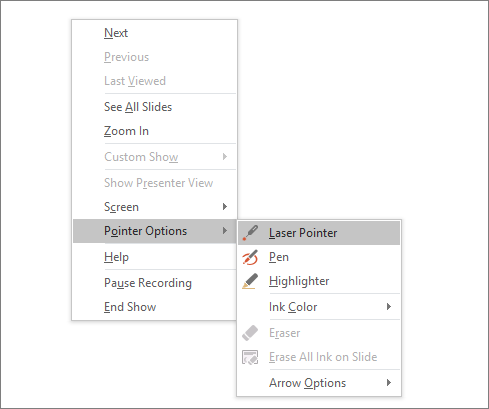
Once done, right-click on the final slide and click on End Show from the drop-down menu to end the recording.
Set slide timings manually
The slide timings are automatically recorded on adding the narrations. However, you can manually set the slide timings to synch your narrations.
Click on the slide on which you want to set the timing. Go to Transition tab. In the Timing ground, click on Advanced Slide.
Under Advanced Slide, select After Checkbox, and mention the seconds you want your slide to appear on the screen to set the timings. Repeat it for every slide to set the timings
Reset the timing of slide using Rehearse timings
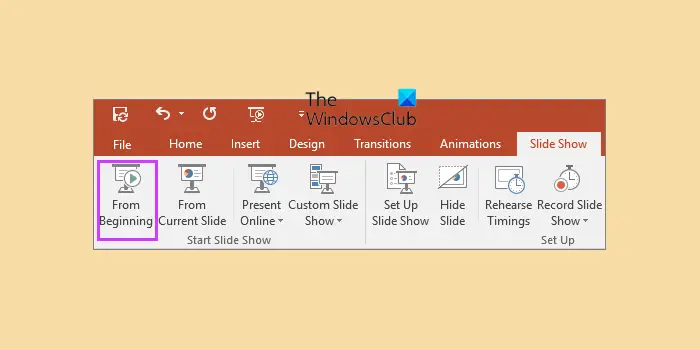
To re-do the timing of slide, use rehearsed timings to set the timing of slide changes that were off by a bit.
Go to Slide Show tab and click on Rehearse Timings. The presentation will be displayed in full-screen mode. Use arrow keys to set new timings.
How do I set timing for PowerPoint audio?
To set the timing for PowerPoint audio, you need to use the Insert option to insert the audio first. Then, you can head to the AUDIO TOOLS option and select the Playback option. Next, select the Play in background option and choose the Loop until stopped option. All these options are available in the latest version of PowerPoint, which is included in Microsoft 365.
How do you record the slide timing for the Slide Show?
To record the slide timing for the slide show in PowerPoint, you can follow the aforementioned steps. You can use the Transition tab to choose the Advanced Slide option. Next, you can select the After checkbox and mention the timing as per your requirements. Whether you use five or fifty slides, you need to use the same method.
That’s all there is to it!
Leave a Reply